Introduction of rum barrel fermentation and washing treatment of Castillo coffee in San Jose Manor, Colombia
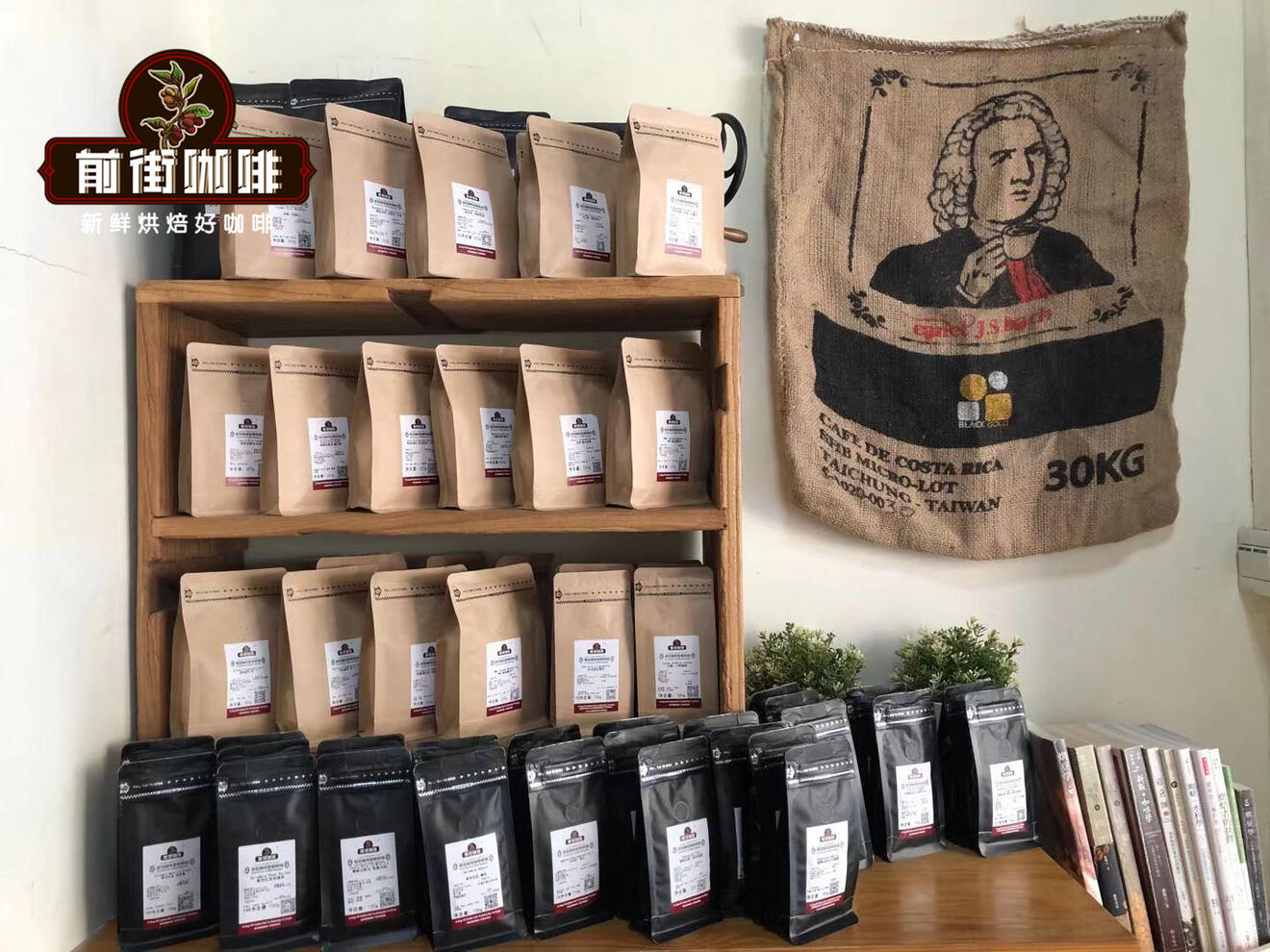
Professional coffee knowledge exchange more coffee bean information please follow the coffee workshop (Wechat official account cafe_style)
Among the common coffee varieties are Arabica and Robusta, in which Arabica is widely used in the market for individual coffee, while Robusta is used to make Italian blended beans or instant coffee. Today, Qianjie Coffee is going to talk about Castillo, one of the hybrid varieties of these two coffee varieties.
What kind of coffee is Castillo?
Castillo is a coffee variety developed by Columbia Coffee Research Institute in 2005 to enhance plant disease resistance. It is currently the main cultivated variety in Colombia.
According to Qianjie, Castillo is the result of five generations of cross breeding between Tim and Kaddura, while Tim is the result of a natural cross between Arabica and Robusta. The plant is tall and resistant to leaf rust. Kaddura is the result of natural mutation of bourbon species. The plant is short and the yield is higher than that of tin pickup and bourbon. It inherits the high quality flavor of bourbon, the distance between plants is small, and the plants per unit area are denser. Susceptible to leaf rust.
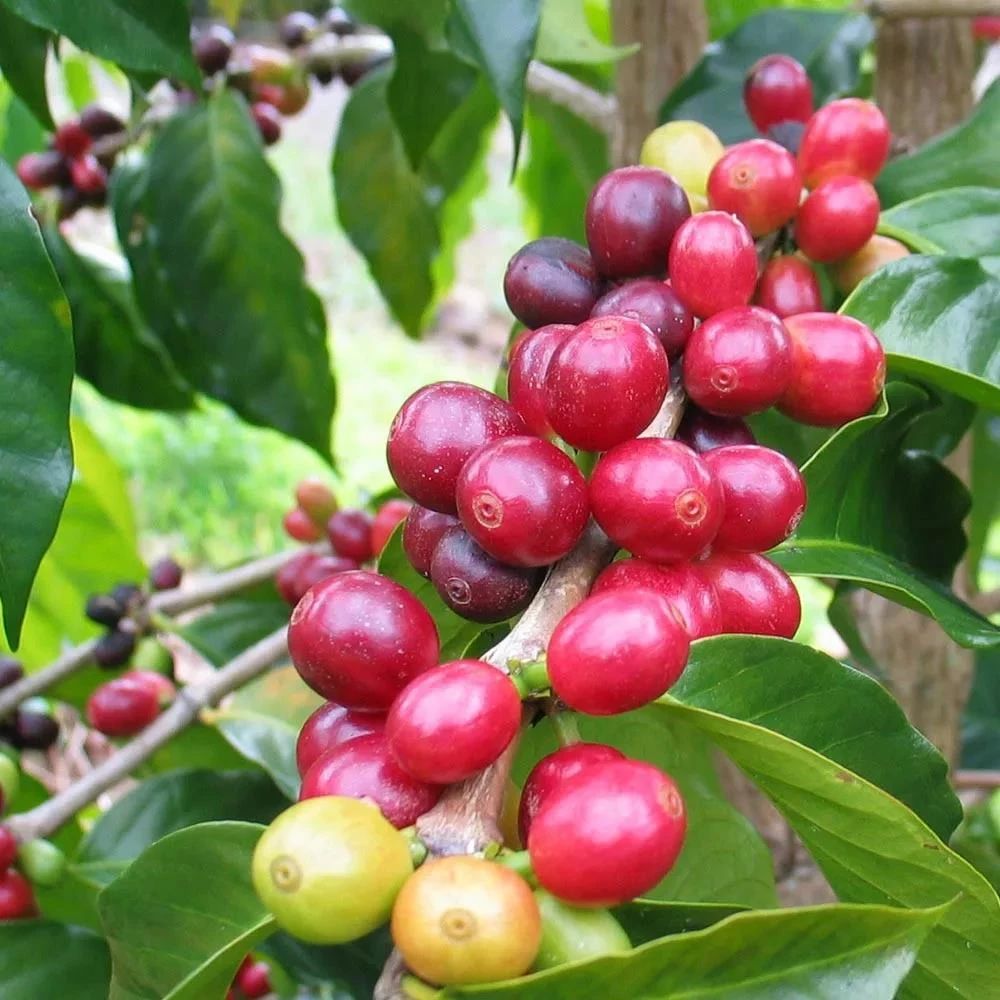
Planting conditions in coffee producing areas of Colombia
Colombia is located in the northwest of the South American continent, bordering Panama in Central America, is a tropical region, the climate varies according to the terrain, covered with rich volcanic soil, annual rainfall of 2000 to 3000mm, mild climate, humid air, very suitable for the cultivation of high-quality Arabica coffee beans, it is precisely this diversity of climate that makes Colombian coffee harvest all the year round. That's why Colombian coffee is of good quality.
Colombia has four treasures: flowers, gold, emeralds and coffee. We can see the importance of coffee in Colombia.
Colombian coffee producing area
According to Qianjie, Colombia coffee producing areas are mainly in the south, all above 1500m above sea level, mainly distributed in Huilan Province, Cauca Province, Nalinglong and Tolima, these producing areas have delicate sour and sweet berries.
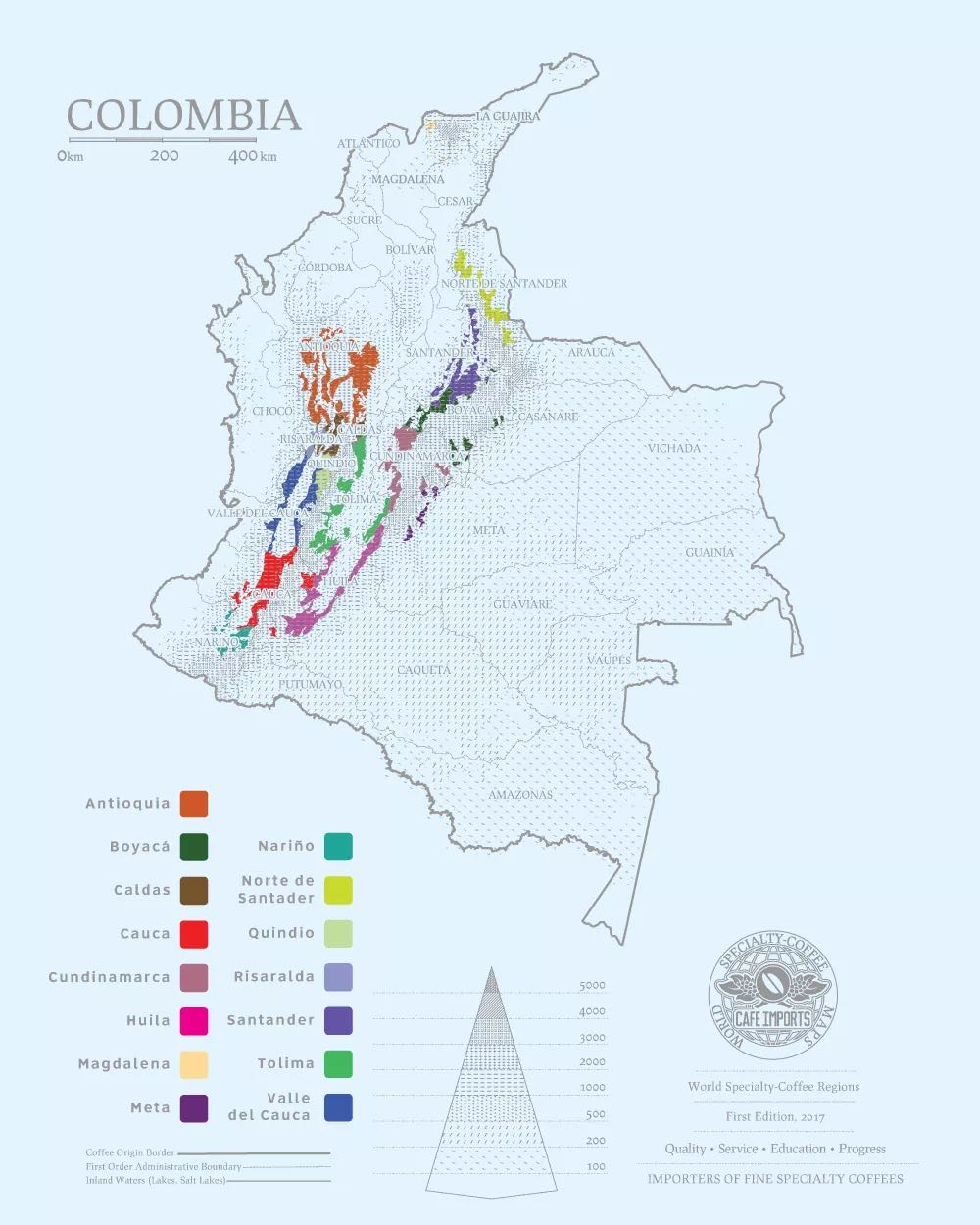
Huilan province
Huilan Province, located in the southern part of the Central Mountains in southern Colombia, is the most famous boutique coffee producing area in Colombia. This area is a hilly area surrounded by mountains, more than 1500 meters above sea level, where the most important rivers in Colombia meet, thus bringing a wealth of water resources and moisture. Contrary to coffee fans' impression of balanced and mellow Colombian coffee, the fine Goran products produced by many small farmers in micro batches are actually very characteristic of the flavor of the producing area. For example, Isabella coffee beans and Huilan coffee beans in the front street store are from Huilan province, but they are quite different in flavor performance.
Cauca province
Cauca province is a certified coffee producing area in Colombia, with an average elevation of 1758m and a maximum elevation of 2100m. The topography, precipitation, temperature and volcanic soil of the area prepare suitable conditions for the growth of coffee. 80% is mountainous, with parallel mountain systems in the east and middle, part of the Andes, and the central mountain system includes two major volcanoes, Sotara and Petacas. The border province of Cauca, like other southwestern producing areas, has a distinct unimodal distribution (monomodal). The dry season mainly occurs from August to September each year, followed by a concentrated coffee season followed by the following year's concentrated coffee harvest season.
The biggest difference in climate between Cauca and other producing areas is probably the relatively large temperature difference, with a daily average temperature of 11 ℃ and a daytime average temperature of 18 ℃. The temperature difference between day and night is an important factor in quality coffee. Low night temperatures and relatively higher elevations slow down the growth of coffee, allowing coffee seeds and beans to more fully absorb the nutrients of coffee fruits, as well as better acidity and commendable special sweetness of Coca Coffee.
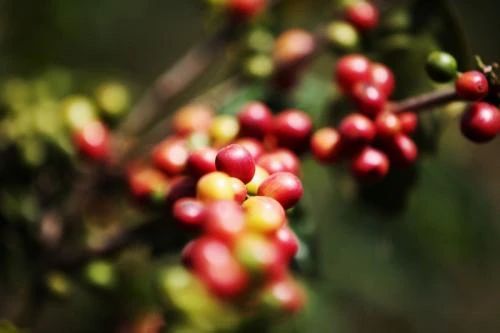
Nalinglong province
Nalinglong province is located in the southwest of Colombia, facing the Pacific Ocean to the west and Ecuador to the south. The Andes Mountains run through the province. Coffee is grown on a high-altitude cloud belt of 1600 Murray 2300 and has fertile volcanic soil. Most of the annual output of Nalinglong is purchased by large American bean merchants, but the total annual output of Nalinglong province is about 150000 bags, while the portion of selected beans is only about 6000 bags.
Tolima
Tolima is adjacent to Whelan and Cauca, which runs through the north-south Andes and Cordillera mountains, and between the two famous mountain systems is the Magdalena River running from south to north. Therefore, it is also very suitable for the planting of coffee trees in soil and water.
And according to Qianjie, it is known that the farm in Tolima is slightly larger than that in other southern Colombian producing areas, about 10-15 hectares. The cooperative approach is also popular here, where farmers send their small batches of fresh coffee and fruit to the cooperative's processing plant. Some farmers will also choose to deal with it on their own, making use of their own small-scale treatment facilities that can handle the harvest of the day.
The above is the information about the cultivation of coffee in Colombia. Next, let's share all the Colombian Castillo coffee beans in the front street coffee shop.
Front Street Coffee Columbia San Jose Manor Coffee beans
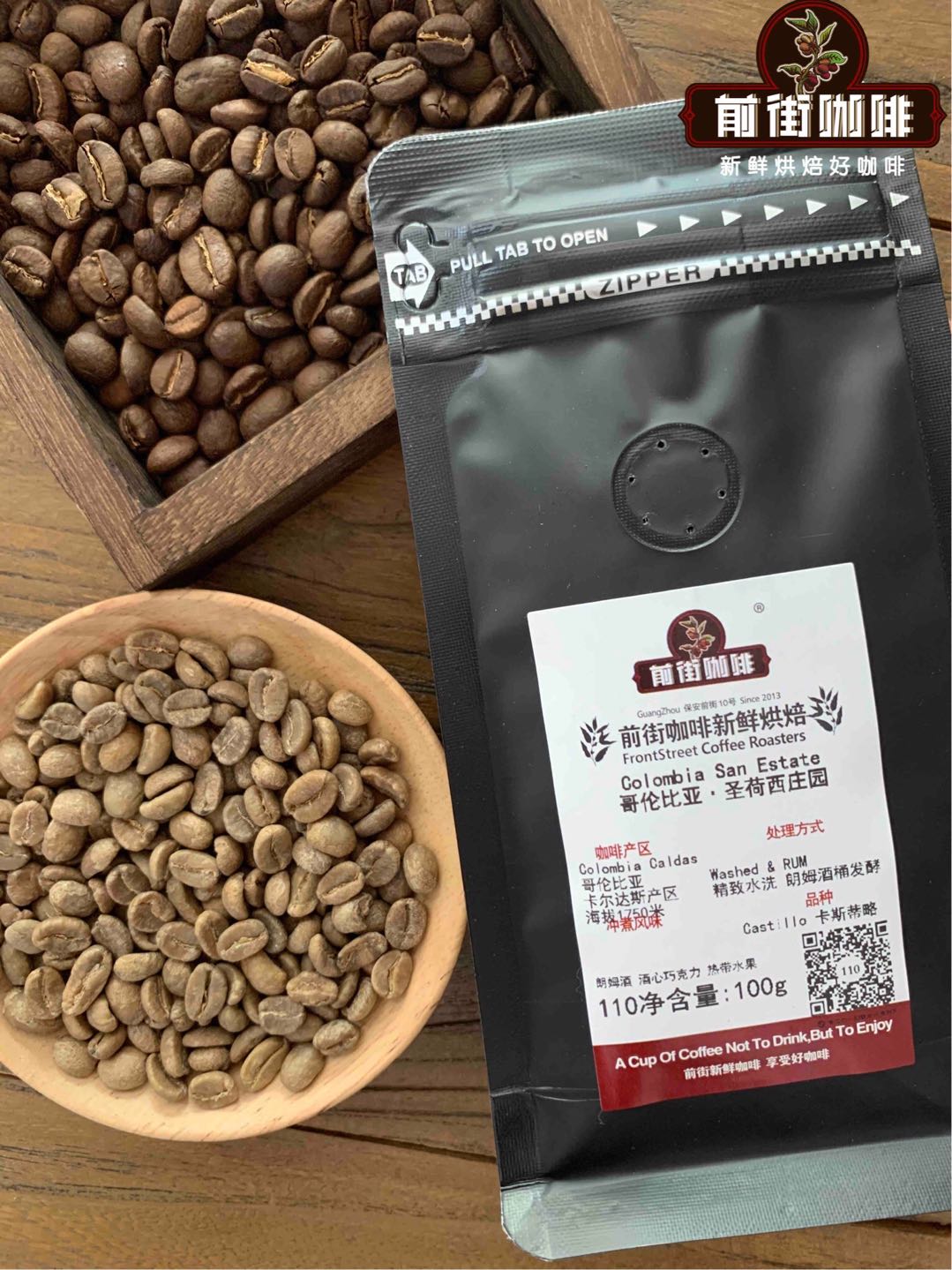
Country: Colombia
Producing area: Caldas
Altitude: 1750m
Variety: Castillo
Treatment method: refined water washing rum barrel fermentation treatment
Flavor: rum, wine heart chocolate, tropical fruit, maple syrup
The reason why Qianjie Coffee is on the shelves is because after testing and brewing, Qianjie found that San Jose Coffee also shows a rich taste of tropical fruit on the basis of wine rhyme, which is similar but has its own characteristics. this also makes Qianjie finally finalize and put this bean on the shelf.
At the same time, the third-generation owner of the estate was the founder of the barrel fermentation method, which was inspired by the idea of putting raw coffee beans into oak barrels when she was brewing rum with her husband. What will happen? Will it absorb oak flavor and achieve barrel brewing effect, just like the original wine?
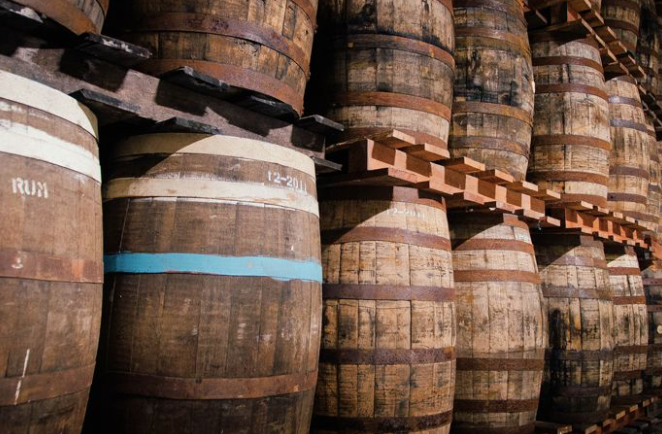
Under this idea, the hostess Monsalve Botero began to put raw beans into rum barrels of different ages for low-temperature fermentation in 2013, and compared the fermentation flavor produced at different times, through this experiment, the most suitable bucket and fermentation time length were selected. Finally, we successfully found the most suitable combination to achieve a special and satisfactory flavor, so as to produce rum barrel fermented coffee which is different from traditional rum washing. So what is the process of this method? Qianjie coffee will be shared with coffee fans and friends below.
Delicate washing treatment + rum barrel fermentation
The owner of the San Jose manor chooses Castillo coffee beans, selects the ripe coffee fruit by hand, and after washing in full water, let it ferment for 20 hours, then put the beans into rum oak barrels for more than 8 years, and leave the beans in the wine barrel for three months. roll once a day to evenly absorb the aroma of the wine.
The coffee beans in the barrel are sampled every 30 days during the barrel fermentation to ensure the degree of fermentation and whether the aroma of the wine is fully absorbed, so that when the coffee beans are finally finished, the characteristics can be more distinct and complete. After fermentation, the rum-flavored coffee beans will be dried in the greenhouse, and the average temperature in the greenhouse can avoid secondary fermentation caused by the high temperature caused by the African scaffolding sun.

Because this San Jose coffee bean is treated in the same way as the two Honduran coffee beans in the front street coffee shop, the front street coffee compares the two kinds of coffee beans for a cup test. it is concluded that the two barrel fermented coffee beans in Honduras appear in the order of wine, then soft acidity, and finally the creamy taste and the flavor of nut cocoa.
The San Jose rum barrel ferments the coffee beans with a creamy taste of nutty cocoa, followed by the aroma of rum, followed by the acidity of tropical fruits and the sweetness of maple syrup.
Front Street Coffee Columbia Paradise Manor Cherry Blossom Coffee beans

Country: Colombia
Production area: Cauca (Paradise Manor)
Altitude: 2050m
Variety: Castillo
Treatment method: double anaerobic washing treatment
Flavor: spices, tea, citrus
The "cherry blossom" coffee comes from the Paradise Manor in Cauca, Colombia. The name of the cherry blossom is probably named "cherry blossom" because it smells like cherry blossoms.
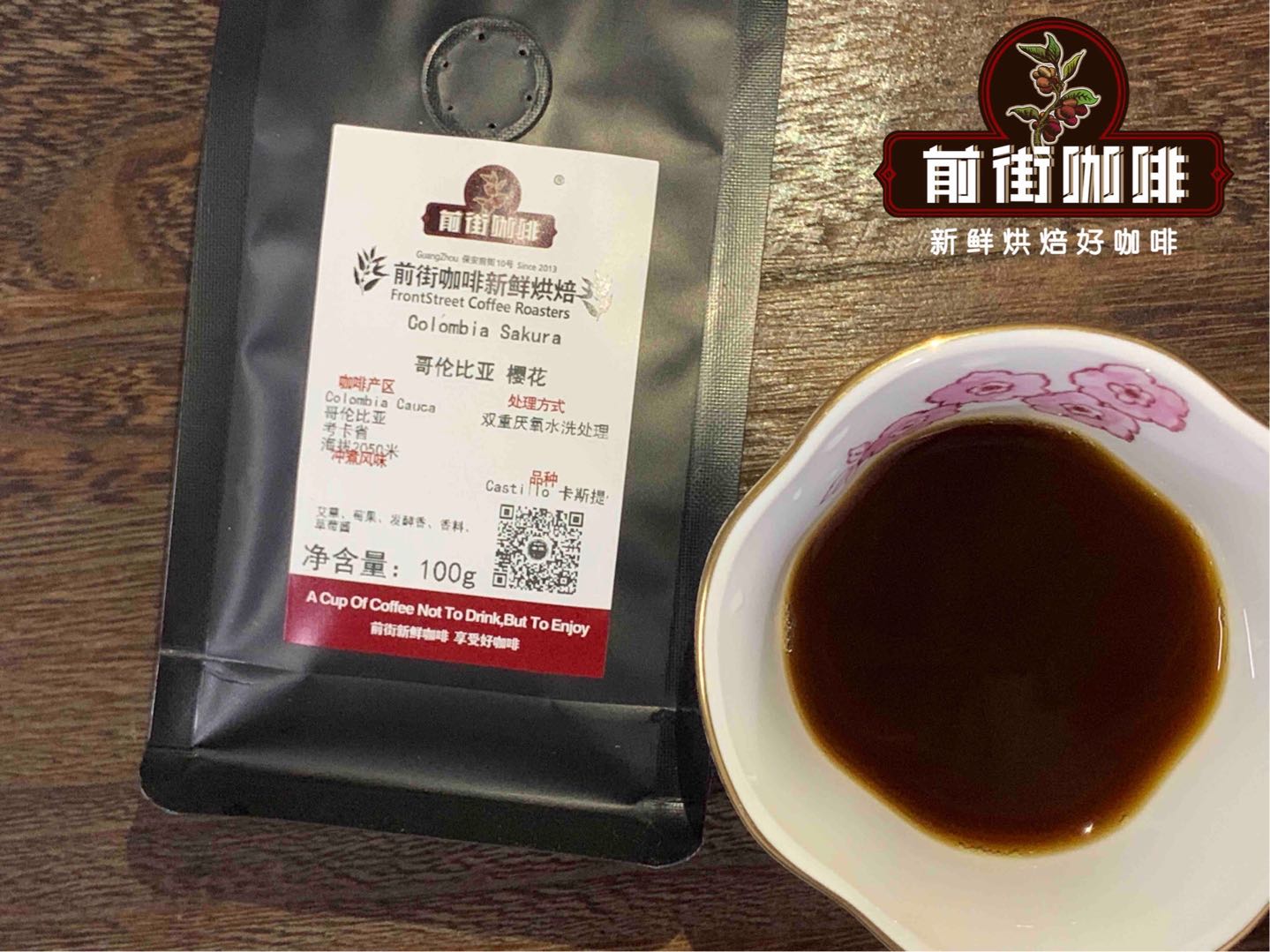
According to Qianjie, Paradise Manor was only known by coffee fans in 2015 and is a rising star. It was started by Mr. Diego Samuel in 2008 as a small family-owned manor, while the owner put the annual surplus into the study of coffee agriculture and continued to delve into how the boutique flavor can be better produced. Until 2015, he participated in the local regional competition for the first time and won the first place. After becoming famous in World War I, he was recognized by the industry and gave him more motivation in promoting the cultivation of boutique coffee. That's why Paradise Manor is widely known to coffee fans.
Characteristics of anaerobic fermentation treatment
The coffee fruit is placed in a stainless steel container (which will not absorb the previous coffee bean flavor) to make the flavor cleaner. Fermentation in a closed environment, various factors are easier to control, each treatment of coffee beans tend to be more consistent, and the aromatic substances are not easy to volatilize. Fermentation in an oxygen-free environment, the flavor is more round, easy to have cheese, cream aroma. And Qianjie believes that the coffee bean flavor treated with this method usually has a fuller mellow thickness and wine flavor.
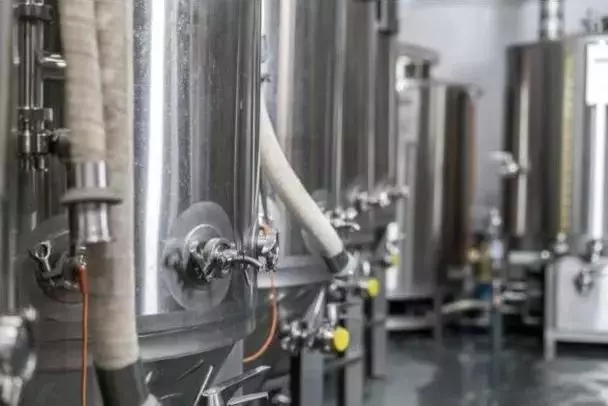
On the other hand, Qianjie coffee will be baked and brewed before each new bean is put on the shelf, and the best parameter will be taken out to be tasted by coffee fans in Qianjie coffee shop. Next, Qianjie will share the roasting and brewing parameters of these two coffee shops.
Qianjie coffee roasting data sharing:
Colombian cherry blossom coffee beans:
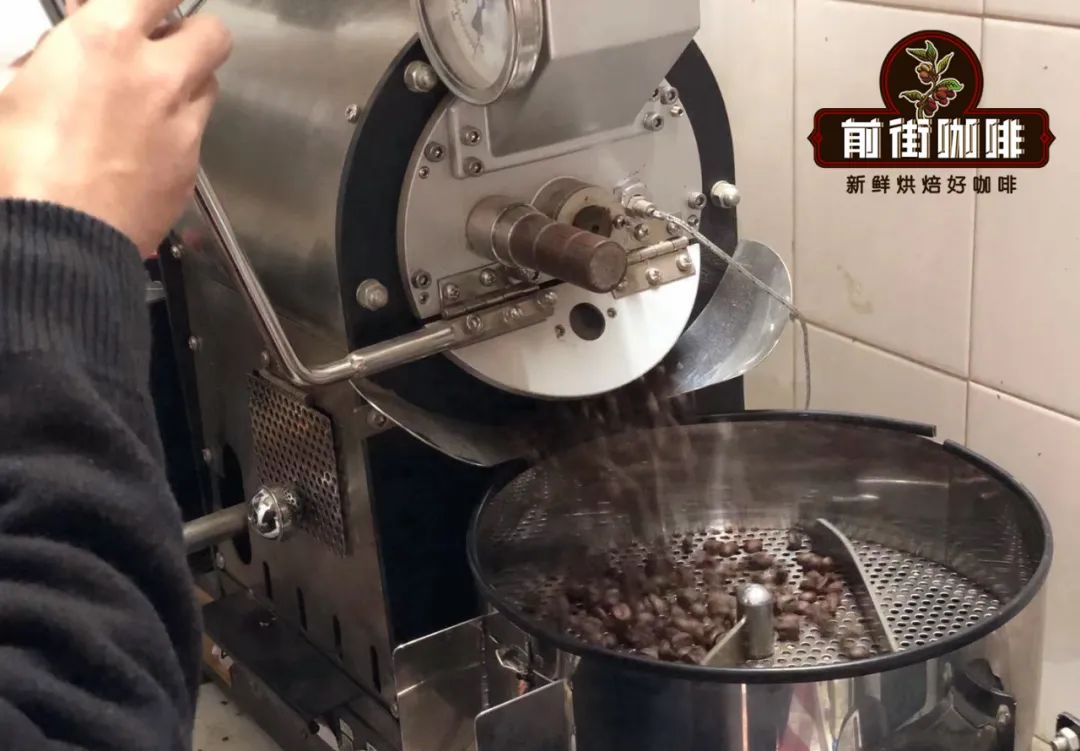
Take Yang family semi-direct fire 800njinghe 300g raw beans as an example. Furnace temperature 190℃ into the pot, firepower 140,140, throttle open 3; tempering point 1, temperature 140℃, the throttle will be opened to 4, the firepower will not change; when the furnace temperature is 151.8 ℃, the bean meter will turn yellow, the smell of grass will disappear completely, enter the dehydration stage, when the furnace temperature reaches 150℃, adjust the firepower to 120, the throttle will not change. The smell of toasted bread has obviously changed to the smell of coffee, which can be defined as a prelude to an explosion. At this time, it is necessary to listen carefully to the sound of the explosion point. The sound of the explosion point begins to explode until the blast starts at 9pm 39th 07, and the throttle opens to 4. After the explosion, the development of 2cm bread 39th ℃ is put into the pot.
Colombian San Jose Manor Coffee beans
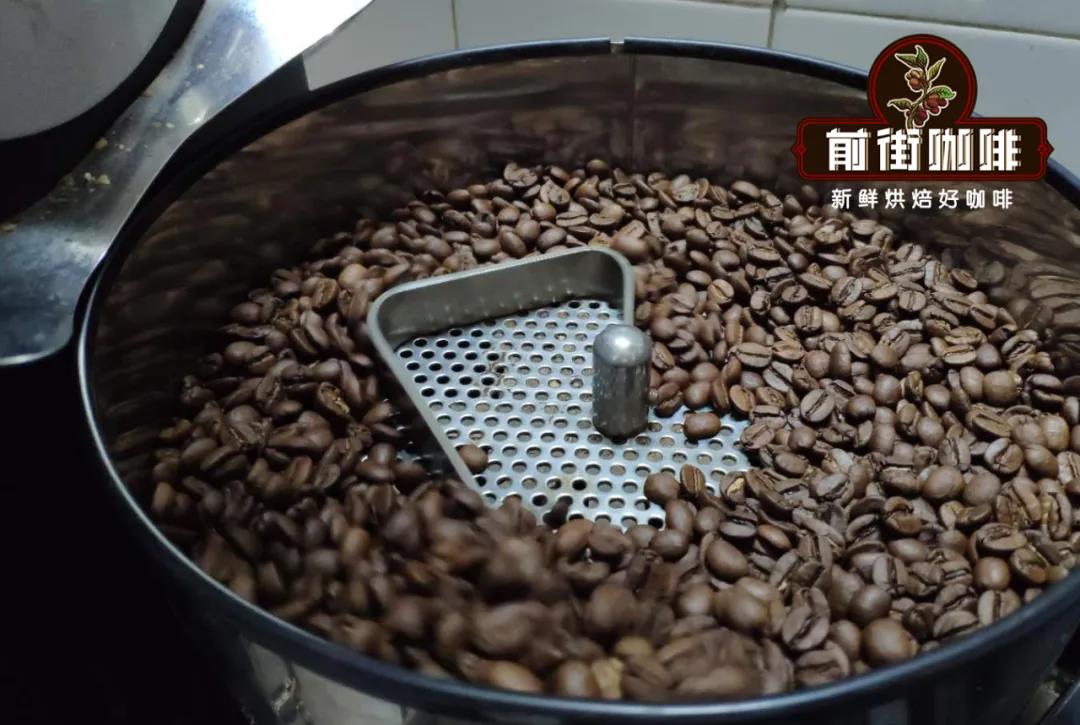
Take Yang family semi-direct fire 800njinghe 300g raw beans as an example. The furnace temperature is 190℃ and the firepower is 140. the throttle is open to 4 at 140℃, and the firepower remains unchanged; when the furnace temperature is 151.8 ℃, the bean meter turns yellow, the smell of grass disappears completely, and enters the dehydration stage. When the furnace temperature reaches 150℃, the firepower is adjusted to 120, and the throttle remains unchanged. The smell of toasted bread has obviously changed to the smell of coffee, which can be defined as a prelude to an explosion. At this time, it is necessary to listen carefully to the sound of the explosion point. The sound of the explosion point begins to explode until the blast starts at 9pm 39th 07, and the throttle opens to 4. After the explosion, the development of 2cm bread 39th ℃ is put into the pot.
Suggestion on brewing coffee in Qianjie
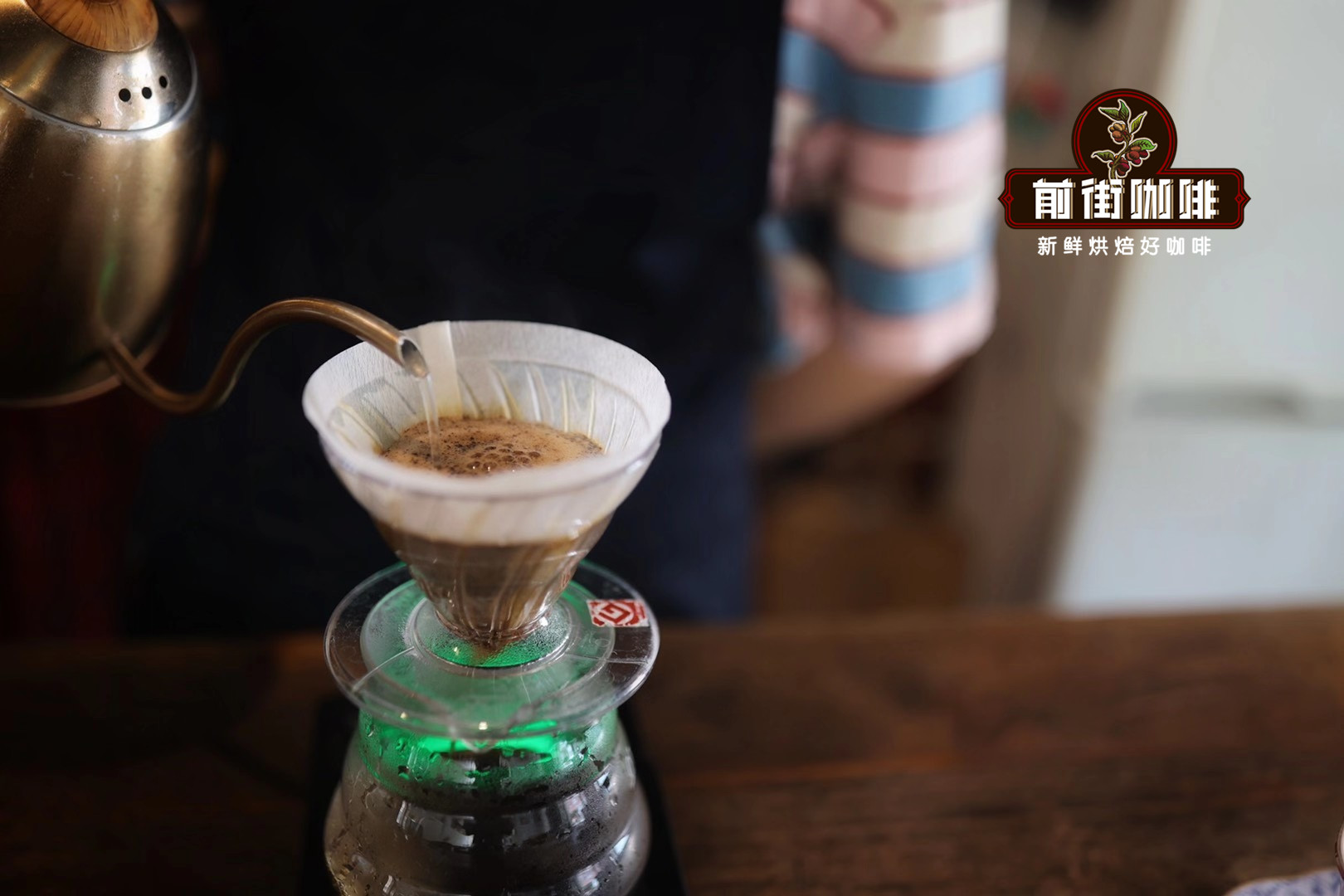
Filter cup: V60 filter cup
Water temperature: 90-91 ℃
Amount of powder: 15g
Powder / water ratio: 1:15
Degree of grinding: medium and fine grinding (pass rate of No. 20 standard screen 78%)
Adopt three-stage cooking technique
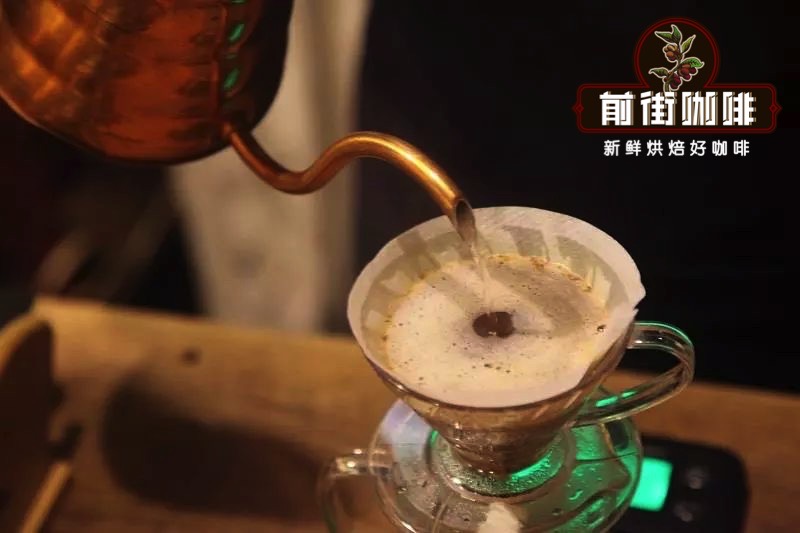
Steam with 30 grams of water for 30 seconds; the center of the small flow is injected to 125 grams, when the water level is about to expose the powder bed, increase the water injection to 225 grams, and remove the filter cup when the water level is about to expose the powder bed. (the time of steaming starts) the extraction time is between 2: 39 and 10: 00.
Colombian cherry coffee bean flavor description: obvious spice tea, citrus-like acidity, smooth, slightly floral aroma, moderate thickness.
Columbia San Jose Manor coffee bean flavor description: with rum, wine heart chocolate, tropical fruit, grape flavor, maple syrup sweet, creamy taste.
For more boutique coffee beans, please add private Qianjie coffee on Wechat. WeChat account: kaixinguoguo0925
Important Notice :
前街咖啡 FrontStreet Coffee has moved to new addredd:
FrontStreet Coffee Address: 315,Donghua East Road,GuangZhou
Tel:020 38364473
- Prev

Good coffee from heaven-St. Helena Coffee. Why is St. Helena Coffee expensive
Professional coffee knowledge exchange more coffee bean information please follow the coffee workshop (Wechat official account cafe_style) "St. Helena Island" also known as "Napoleon Island" ~ St. Helena Coffee is one of the ten most expensive coffee. St. Helena Island is located 1900 kilometers away from the west bank of Africa. The island was discovered by Portuguese navigators in May 1502 and occupied by the Netherlands from 1645 to 1651
- Next
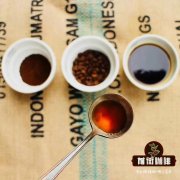
Costa Rica Abejilla Little Bee processing Plant Solar Honey treatment Venice Coffee Bean Cooking Construction
For more information on coffee beans, please follow Coffee Workshop (Wechat official account cafe_style), a Costa Rican coffee processing plant-Abejilla Farm has a unique coffee variety in the world. The ripening period of it will be delayed by 25 to 40 days, which is larger granulated, more full-bodied and full-bodied than traditional varieties. So many buyers are willing to spend more than other products.
Related
- Detailed explanation of Jadeite planting Land in Panamanian Jadeite Manor introduction to the grading system of Jadeite competitive bidding, Red bid, Green bid and Rose Summer
- Story of Coffee planting in Brenka region of Costa Rica Stonehenge Manor anaerobic heavy honey treatment of flavor mouth
- What's on the barrel of Blue Mountain Coffee beans?
- Can American coffee also pull flowers? How to use hot American style to pull out a good-looking pattern?
- Can you make a cold extract with coffee beans? What is the right proportion for cold-extracted coffee formula?
- Indonesian PWN Gold Mandrine Coffee Origin Features Flavor How to Chong? Mandolin coffee is American.
- A brief introduction to the flavor characteristics of Brazilian yellow bourbon coffee beans
- What is the effect of different water quality on the flavor of cold-extracted coffee? What kind of water is best for brewing coffee?
- Why do you think of Rose Summer whenever you mention Panamanian coffee?
- Introduction to the characteristics of authentic blue mountain coffee bean producing areas? What is the CIB Coffee Authority in Jamaica?

